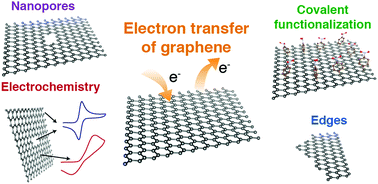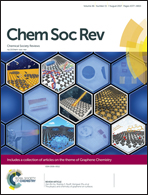Current and future directions in electron transfer chemistry of graphene
Abstract
The participation of graphene in electron transfer chemistry, where an electron is transferred between graphene and other species, encompasses many important processes that have shown versatility and potential for use in important applications. Examples of these processes range from covalent functionalization of graphene to modify its properties and incorporate different functional groups, to electrochemical reactions and selective etching. In this paper, we review recent developments in these areas of the electron transfer chemistry of graphene. We address recent progress on controlling covalent functionalization through chemical and physical methods, and how carefully functionalized graphene can be incorporated into composite materials with enhanced properties. We review the selective etching of graphene to form edges and nanopores, which have unique chemical and physical properties. Nanoporous graphene is promising for new membrane and filtration applications. We also discuss the electrochemistry of graphene grown by chemical vapour deposition in two-dimensional and three-dimensional geometries, which enables large surface areas and control over the distribution and concentration of edge and basal plane sites. We discuss the potential for each of these areas to have an impact in future applications such as filtration membranes, electronic devices, electrochemical electrodes, composite materials, and chemical sensors.

- This article is part of the themed collection: Graphene Chemistry


 Please wait while we load your content...
Please wait while we load your content...